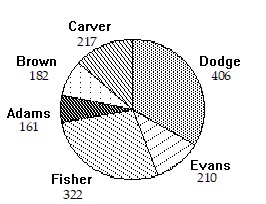A person's weight depends both on the daily rate of energy intake, say C calories per day, and the daily rate of energy consumption, typically between 12 and 20 calories per pound per day. Using an average value of 16 calories per pound per day, a person weighing w pounds uses 16w calories per day. If  , then weight remains constant, and weight gain or loss occurs according to whether C is greater or less than 16w.To determine how fast a change in weight will occur, a plausible assumption is that dw/dt is proportional to the net excess (or deficit)
, then weight remains constant, and weight gain or loss occurs according to whether C is greater or less than 16w.To determine how fast a change in weight will occur, a plausible assumption is that dw/dt is proportional to the net excess (or deficit)  in the
in the
number of calories per day.Given that 3500 calories is equivalent to one pound, a differential equation to express this relationship is  . Solve this differential equation.
. Solve this differential equation.
A. w = C - e-0.0046M e-0.0046t
B. w = C - e-0.0065M e-0.0065t
C. w = C/16 - e-0.0046M e-0.0046t /16
D. w = C/16 - e-0.0065M e-0.0065t /16
Answer: C
You might also like to view...
Solve the equation. = 4
= 4
A. {-72, -8} B. [72, -8} C. ? D. {8, 72}
Evaluate the expression.-73
A. 21 B. -21 C. -343 D. 343
Provide an appropriate response. Find the slope of the line that passes through the points (3, 2) and (8, 2).
A. no slope
B. 2
C. 
D. 0
Use the circle graph to solve the problem.The circle graph below gives the number of students in the residence halls at the state university. Which residence hall has the second lowest number of students?
Which residence hall has the second lowest number of students?
A. Dodge B. Fisher C. Adams D. Brown